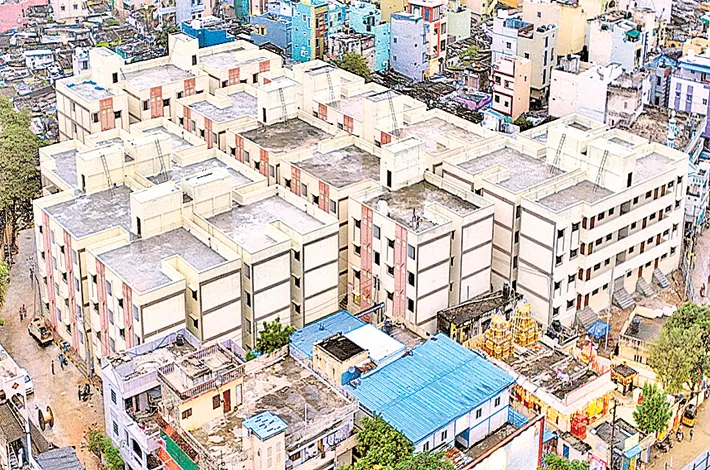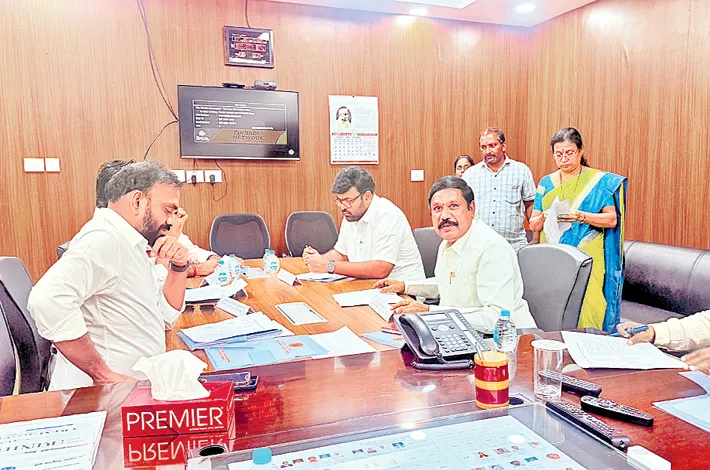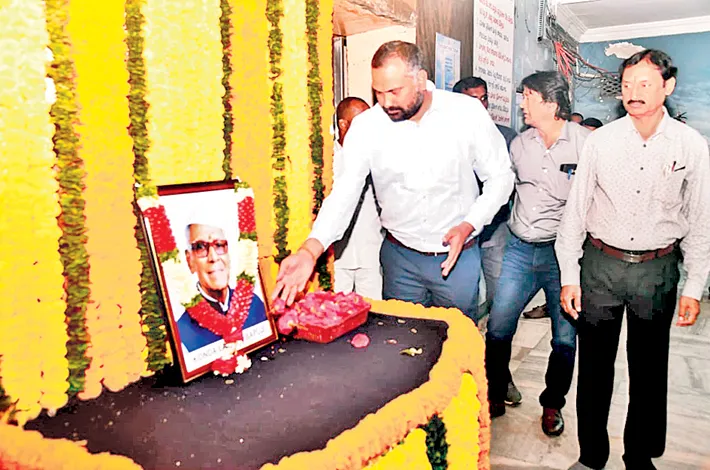The Charminar Cipher
19-05-2025 12:00:00 AM

The key, Ayesha deduced, likely opened a lockbox or safe. She revisited Rao’s shop, combing every inch. In a hidden compartment beneath the floorboards, she found a steel box, its lock matching the crescent key. Inside was a parchment map, its faded ink tracing a path to Golconda Fort, the ancient Qutb Shahi stronghold.
With Srinivas and a small team, Ayesha navigated Golconda’s crumbling ramparts under moonlight. The map led to a sealed tomb in the Qutb Shahi necropolis, its entrance marked by a crescent carving
In the labyrinthine alleys of Hyderabad’s Old City, where the scent of biryani mingled with the call of the muezzin, Inspector Ayesha Khan sipped her Irani chai, her eyes scanning the bustling Laad Bazaar. It was 2025, but the ancient heart of Hyderabad beat as it had for centuries, its narrow lanes pulsing with secrets. Ayesha, a sharp-witted detective with the Hyderabad Police, had been summoned to the iconic Charminar at dawn. A body had been found, and the case was already whispering trouble.
The victim was Vikram Rao, a reclusive antiques dealer known for his dealings in Mughal-era artifacts. His body lay sprawled at the base of the Charminar’s eastern minaret, a single gunshot自主 slit across his throat, his silk kurta soaked in blood. A cryptic note was pinned to his chest, scrawled in Urdu: The key is hidden where the four roads meet. Ayesha’s partner, Constable Srinivas, scratched his head. “What does it mean, madam? Four roads?”
Ayesha crouched beside the body, her dupatta shielding her face from the morning sun. The Charminar, its four grand arches towering above, stood at the crossroads of the Old City’s main thoroughfares. “It’s a riddle,” she murmured. “And this place is the clue.”
The forensics team arrived, led by Dr. Fatima, who confirmed the time of death: sometime between midnight and 3 a.m. The murder weapon was missing, but the clean cut suggested a sharp blade, possibly a traditional talwar. Ayesha’s mind raced. Rao’s shop, tucked in a nearby alley, was her next stop.
The shop was a treasure trove of relics—jade inkwells, ivory miniatures, and ancient coins. A ledger on the counter listed recent sales, including a 16th-century astrolabe sold to an anonymous buyer for a staggering sum. Ayesha’s instincts flared. “Srinivas, check Rao’s call records. I want to know who he spoke to last night.”
Back at the station, the investigation gained momentum. Rao’s phone records showed a call from a burner phone at 11 p.m., traced to a payphone near the Mecca Masjid. A witness, an elderly chaiwallah, recalled seeing Rao arguing with a tall man in a black shawl near the Charminar at midnight. “He looked angry, waving his hands,” the old man said. “Then they both vanished into the crowd.”
Ayesha returned to the crime scene that evening, the Charminar aglow under floodlights. The note’s words—The key is hidden where the four roads meet—nagged at her. She studied the monument’s four arches, each facing a cardinal direction. On a hunch, she climbed the spiral staircase to the Charminar’s upper gallery, a vantage point overlooking the crossroads. There, tucked in a crevice behind a carved stucco flower, was a small brass key, its bow shaped like a crescent moon.
The key was a breakthrough, but to what? Ayesha cross-referenced Rao’s ledger with police databases. The astrolabe’s buyer was linked to a shell company in Dubai, a front for an international antiquities smuggling ring. Rao, it seemed, had been fencing stolen artifacts, and the astrolabe was no ordinary relic—it was rumored to encode the location of a lost Mughal treasure, hidden since Aurangzeb’s reign.
The key, Ayesha deduced, likely opened a lockbox or safe. She revisited Rao’s shop, combing every inch. In a hidden compartment beneath the floorboards, she found a steel box, its lock matching the crescent key. Inside was a parchment map, its faded ink tracing a path to Golconda Fort, the ancient Qutb Shahi stronghold.
With Srinivas and a small team, Ayesha navigated Golconda’s crumbling ramparts under moonlight. The map led to a sealed tomb in the Qutb Shahi necropolis, its entrance marked by a crescent carving. The key unlocked a hidden door, revealing a chamber glittering with gold coins, emeralds, and a velvet-lined case holding the astrolabe. But as Ayesha reached for it, a shadow moved.
“Stop!” A tall man in a black shawl emerged, brandishing a talwar. His eyes gleamed with desperation. “The treasure is mine.”
Ayesha’s hand hovered near her service pistol. “You’re the buyer,” she said, stalling. “You killed Rao to keep the astrolabe’s secret.”
He sneered. “He was greedy. Wanted more money. Now, hand over the map.”
Srinivas, unnoticed, circled behind. Ayesha kept the man talking. “The police are already on their way. You’re finished.”
Enraged, he lunged. Srinivas tackled him, and Ayesha disarmed him, the talwar clattering on stone. The man, identified as Arif Malik, a smuggler with ties to the Dubai ring, was cuffed and hauled away.
Back at the station, the astrolabe was sent to historians for study, its secrets still unraveling. The treasure was cataloged for the Archaeological Survey of India, and Ayesha filed her report, the case closed. As she sipped chai at her desk, the Charminar’s silhouette loomed outside her window, a silent sentinel over Hyderabad’s mysteries. In the Old City, where past and present collided, Ayesha knew another riddle was never far away.








